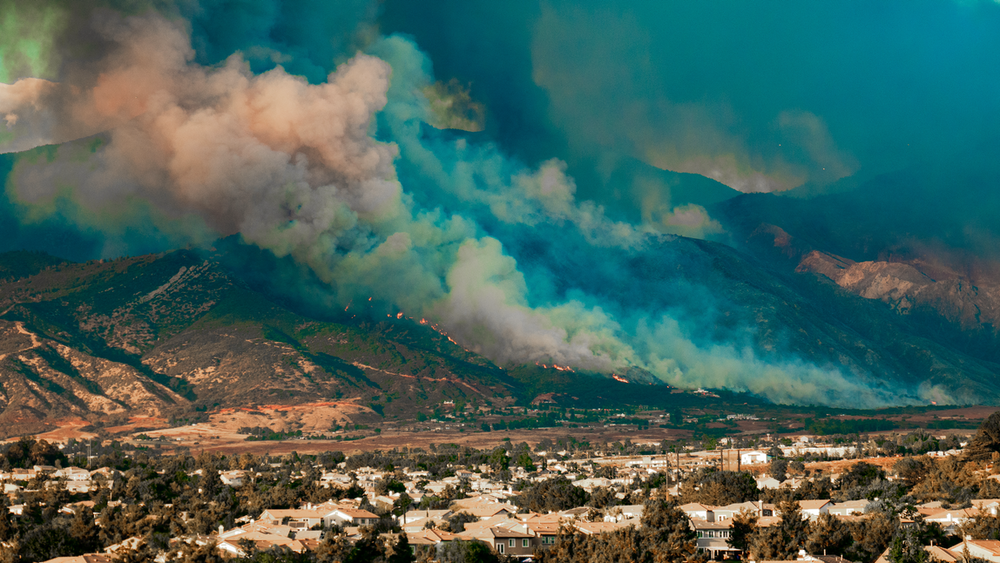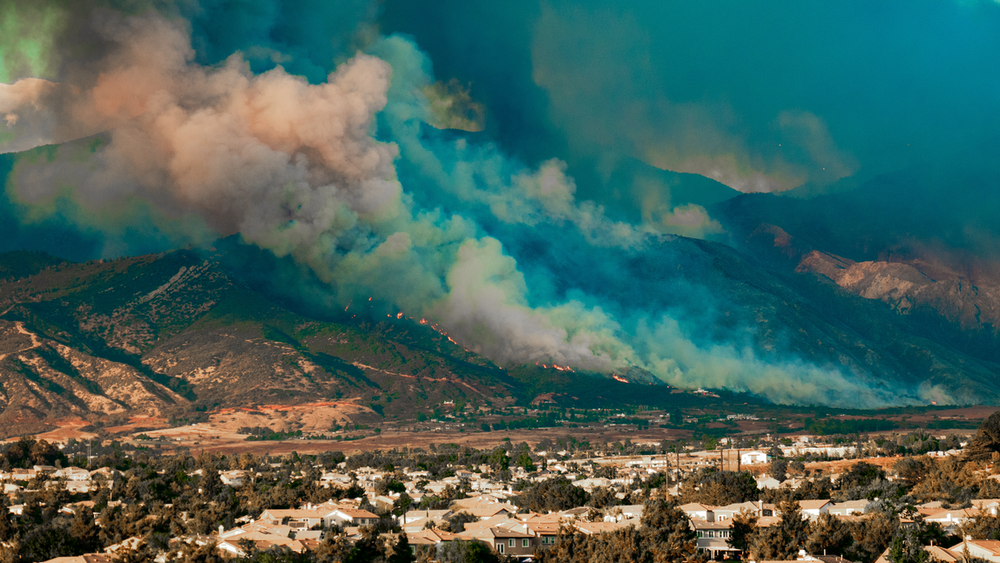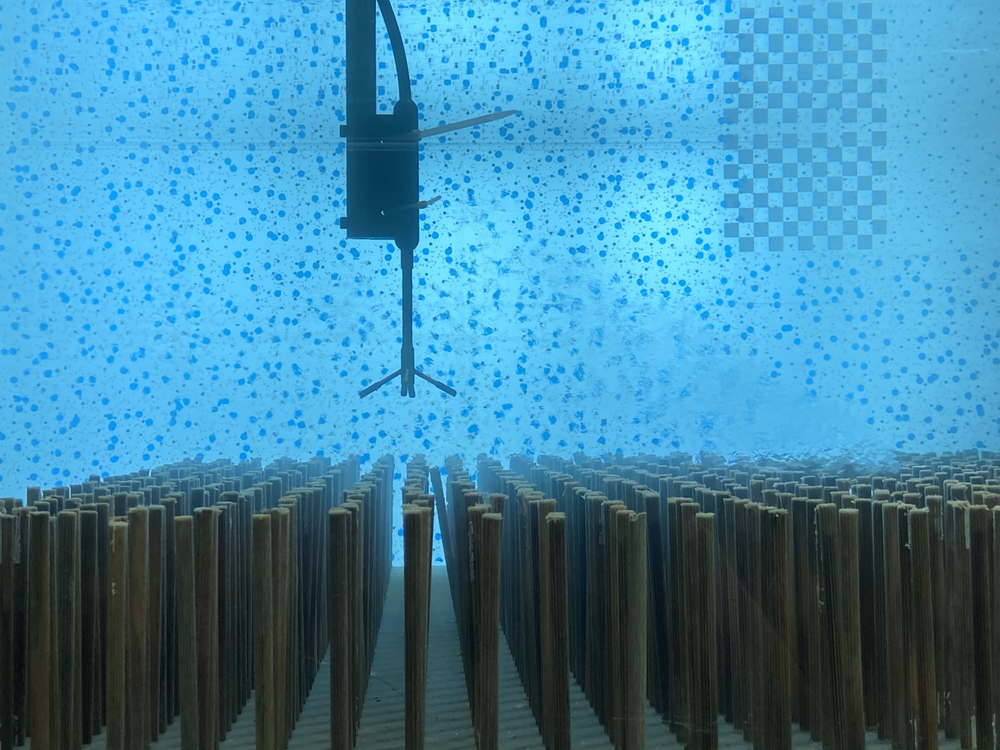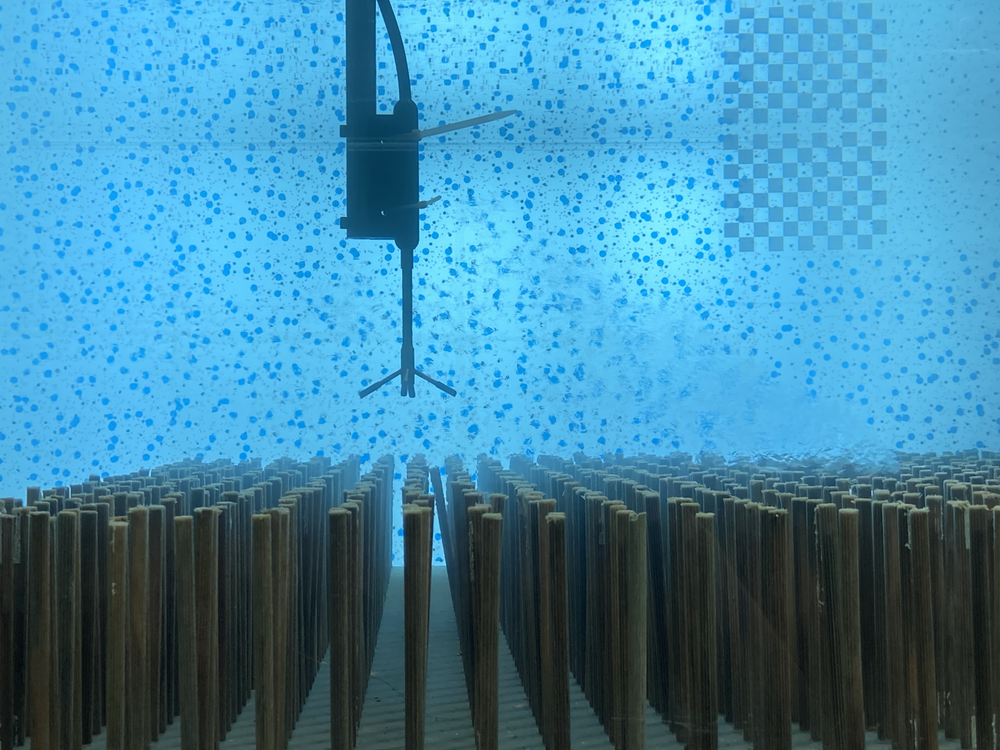Wildfire Predictions from a Water Tank
Wildfires often spread more quickly than expected because powerful plumes of hot gas propel burning embers over long distances, starting new spot fires far away. Now, in experiments in a water tank, researchers have shown that the unpredictability of the process is accentuated by a layer of turbulent air just above the forest canopy [1]. The researchers hope that the work will help build a deeper understanding of this aspect of wildfire dynamics and provide ways to predict more accurately how fast a fire may spread.
Wildfires cause immense damage every year, and climate change is making them increasingly frequent and more violent. Fire researchers struggle to predict how fires will spread because so many factors play a role, including rainfall, fuel density, and wind. Another poorly understood factor is the influence of a layer of flowing air near the forest canopy, says fluid dynamics expert Hayoon Chung of Stanford University.
As winds blow across the tops of a forest’s trees, the airflow at this altitude becomes unstable, resulting in the formation of a series of side-by-side rolls—rotations of the air about a horizontal axis. When a plume of warm air rising from a fire encounters these rolls, it can be torn apart by the upward- and downward-moving air, in addition to being carried downstream by the horizontal flow. But researchers remain unclear on how this interaction might influence a plume and its tendency to transport burning embers.
To learn more, Chung and Jeffrey Koseff, also of Stanford, undertook a series of experiments using a water tank. On the bottom of a tank 0.4 m deep and 7.2 m long, they fixed a grid of upright wooden dowels, 10 cm in height, to mimic a forest. By driving a well-controlled water flow over this grid, they generated a layer of turbulent flow just above the dowels. The duo could then mimic a rising plume by injecting a warm liquid into the tank. The plume would gradually rise toward the tank surface while being carried downstream by the current. The researchers recorded video through the side of the tank, looking toward a random pattern of dots on the far wall. They distinguished the warmer plume water by the optical distortions it generated in the dot pattern. The team arranged the conditions in the experiment to allow a direct comparison between the liquid plume’s behavior and that of air in a wildfire.
In the experiments, Chung and Koseff released the plume at the top of the canopy from a sequence of positions that were progressively farther downstream along the tank. The fluid grew more turbulent as it flowed, so this procedure allowed them to observe the plume under varying degrees of turbulence.
Each video frame showed the full extent of the plume at a moment in time, and the researchers observed changes in the flow by tracking a line through the center of the plume representing the mean path. They found that the average of this trajectory over several minutes was not affected by increasing turbulence. However, increasing turbulence did lead to strong vertical fluctuations—wide variations in the trajectories from one moment to the next. These fluctuations were primarily caused by pronounced rolls in the flow.
The team saw plume trajectories that were both far higher and far lower than the average path in the absence of turbulence, says Chung. So with strong turbulence, “a larger fraction of embers might be intermittently lofted higher into regions having wind speeds able to carry them much farther downwind,” she says. Chung emphasizes that the present work is still based on idealized physics. “But in the future, we hope to provide some guidance” for managing forest canopies, she says.
“This is an important contribution to the wildland fire literature,” says Tirtha Banerjee, an expert in turbulent flows in natural environments at the University of California, Irvine. The research “provides insights into the complex interaction of strong buoyant plumes with canopy turbulence,” he says. Banerjee adds that this information is essential for predictions of the spread of fires through the dispersal of burning pieces of wood.
–Mark Buchanan
Mark Buchanan is a freelance science writer who splits his time between Abergavenny, UK, and Notre Dame de Courson, France.
References
- H. Chung and J. R. Koseff, “Interaction of a buoyant plume with a turbulent canopy mixing layer,” Phys. Rev. Fluids 8, 064501 (2023).







